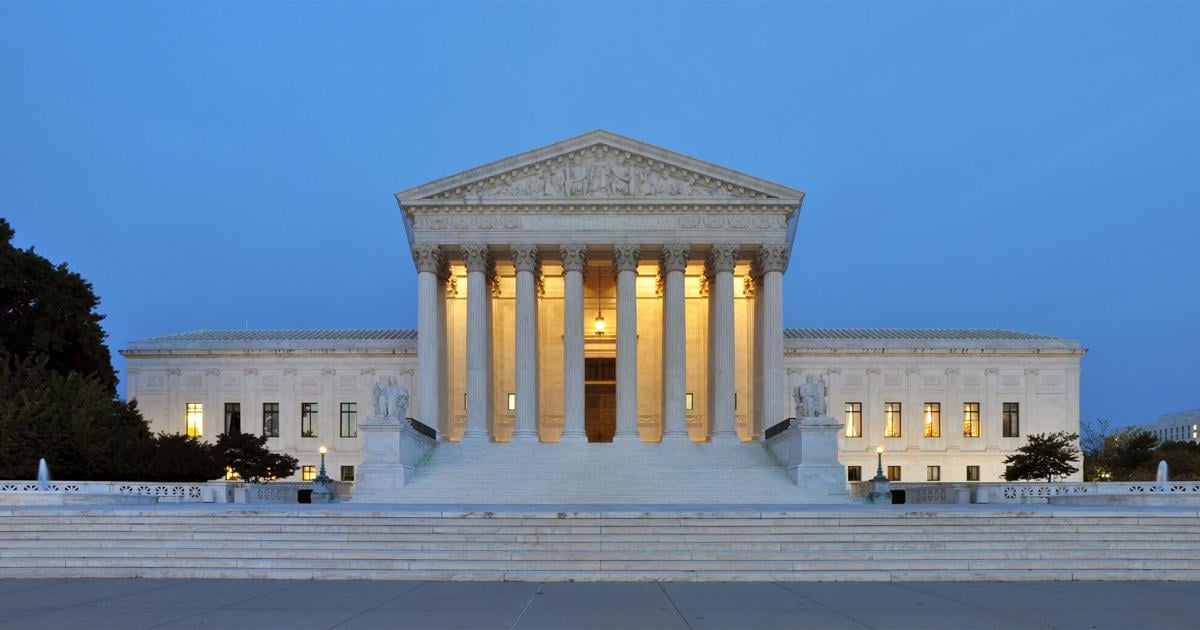Noem v. Vasquez Perdomo highlights fundamental disagreements between state and federal perspectives on immigration enforcement.
Photo via Creative Commons
Immigration law has been the topic of continuous and complex exchanges between state and federal authorities as of late. California, home to numerous sanctuary cities and jurisdictions, has pushed back on the current administration’s efforts to crack down on immigration, leading to a back and forth between national and local immigration-related ideals.
Most recently, the Supreme Court of the United States granted a request from the federal government to stay a California district court’s injunction preventing federal immigration agents from questioning individuals based solely on factors of race/ethnicity, language, location and occupation, broadly. The Sept. 8 decision to grant the stay in the case of Noem v. Vasquez Perdomo means Department of Homeland Security (DHS) agents — including U.S. Immigration and Customs Enforcement (ICE) — may continue to question individuals based solely on the aforementioned factors.
The state of immigration in California is, once again, a divisive point of discussion. Following the Supreme Court’s grant of a stay in Noem v. Vasquez Perdomo, the Loyolan analyzed the preceding run of events and what immigration enforcement may look like from here on out.
“The law, as far as anybody knows, is exactly the same the day the [Supreme Court] pressed pause [on the injunction] and the day after the court pressed pause. The result is that there’s nothing stopping ICE from executing unlawful searches,” said Justin Levitt, professor of law at Loyola Law School.
A Flourish data visualization by Loyolan UI/UX
Immigration law, as Levitt asserts, has experienced no substantive change thus far. The U.S. Citizenship and Immigration Services have made regular adjustments and revisions to their policy since Judge Maame Ewusi-Mensah Frimpong issued a temporary restraining order (TRO), but nothing has shifted constitutionally regarding immigrant rights and no new legislation has been signed into effect.
The responsive practices of ICE during this timeline, however, tell a different story.
After the district court’s TRO was affirmed, ICE arrests in LA took a sharp turn, declining 66% in just 16 days based on ICE data, according to the Deportation Data Project. The project recorded data on a rolling weekly basis, noting an increase after Stephen Miller, White House deputy chief of staff, addressed ICE on May 20. A slope in arrests was recorded after the TRO.
LA contains a Hispanic population of almost five million and adopted the title of a sanctuary city in November 2024. Following the Court’s decision to stay the injunction, LA residents could fall victim to further arrests.
In fact, in the 14 days after the stay, ICE detainments were on an uptick nationally — especially among immigrants with no criminal record and immigrants with pending charges. During that same period, the number of detained individuals with a criminal record fell.
DHS officials have expressed encouragement for the effort against immigration. Tricia McLaughlin, assistant secretary for public affairs at DHS, told the Guardian that ICE is targeting “the worst of the worst – including murderers, MS-13 gang members, pedophiles and rapists.”
“Seventy percent of ICE arrests are of criminal illegal aliens who have been convicted or have pending charges in the U.S.,” she asserted.
Over half of individuals detained by ICE have no criminal record as of Sept. 22. Lack of documentation is a civil offense punishable by deportation, not a crime punishable by incarceration.
Importantly, the factors that lead to immigration-related arrests are lawfully permitted to — and often do — include race, ethnicity, language, location and occupation.
“Race and/or ethnicity can be considered — among other factors — for immigration enforcement agents when investigating immigration matters,” said Kathleen C. Kim, professor of law at Loyola Law School, affirming the influence that these factors can have. “What becomes a police encounter or an encounter between a civilian or a [ICE] agent could have very well started by profiling on the basis alone of race and ethnicity, and through that encounter, other factors come into play. It is very easy to justify then that [the] encounter was not based solely on race.”
The plaintiffs in Noem v. Vasquez Perdomo argued that reliance on these individual factors alone violates the Fourth Amendment. Kim mirrored this belief and elaborated on the case’s constitutional contravention.
“It feels like an assault … [Noem v. Vasquez Perdomo] strengthens, I think, federal government preemption of the rights of localities and states to enact their own protections and regulations for the welfare of its residents under the 10th Amendment,” said Kim.
Nonetheless, ICE agents are currently permitted, under Noem v. Vasquez Perdomo, to use said factors independently to detain civilians — despite contradictions to previous rulings. As a result, LA may be the subject of more activity from immigration enforcement. That is, until the Supreme Court administers a final decision.
Through a writ of certiorari, “[The case may] still go up through the Court of Appeals … but the trial court’s order is paused in the meantime,” said Levitt. He later stated that if such certiorari is granted, the stay will terminate if the court rules in favor of Vasquez Perdomo. “If the Supreme Court doesn’t decide to take the case, that too unpresses pause.”
The stay on the TRO remains in place until further action — or lack thereof — from the Supreme Court. Despite contention, DHS remains grounded in its immigration stance.
“President Trump’s policies and Secretary Noem’s leadership are working and making American communities safe,” said McLaughlin in a Sept. 23 DHS press release. Experts at Loyola Law School question DHS’ perspectives on immigration law.
“What does it mean when the Supreme Court stops other courts from enforcing the law? … We don’t have an answer to that,” said Levitt.
